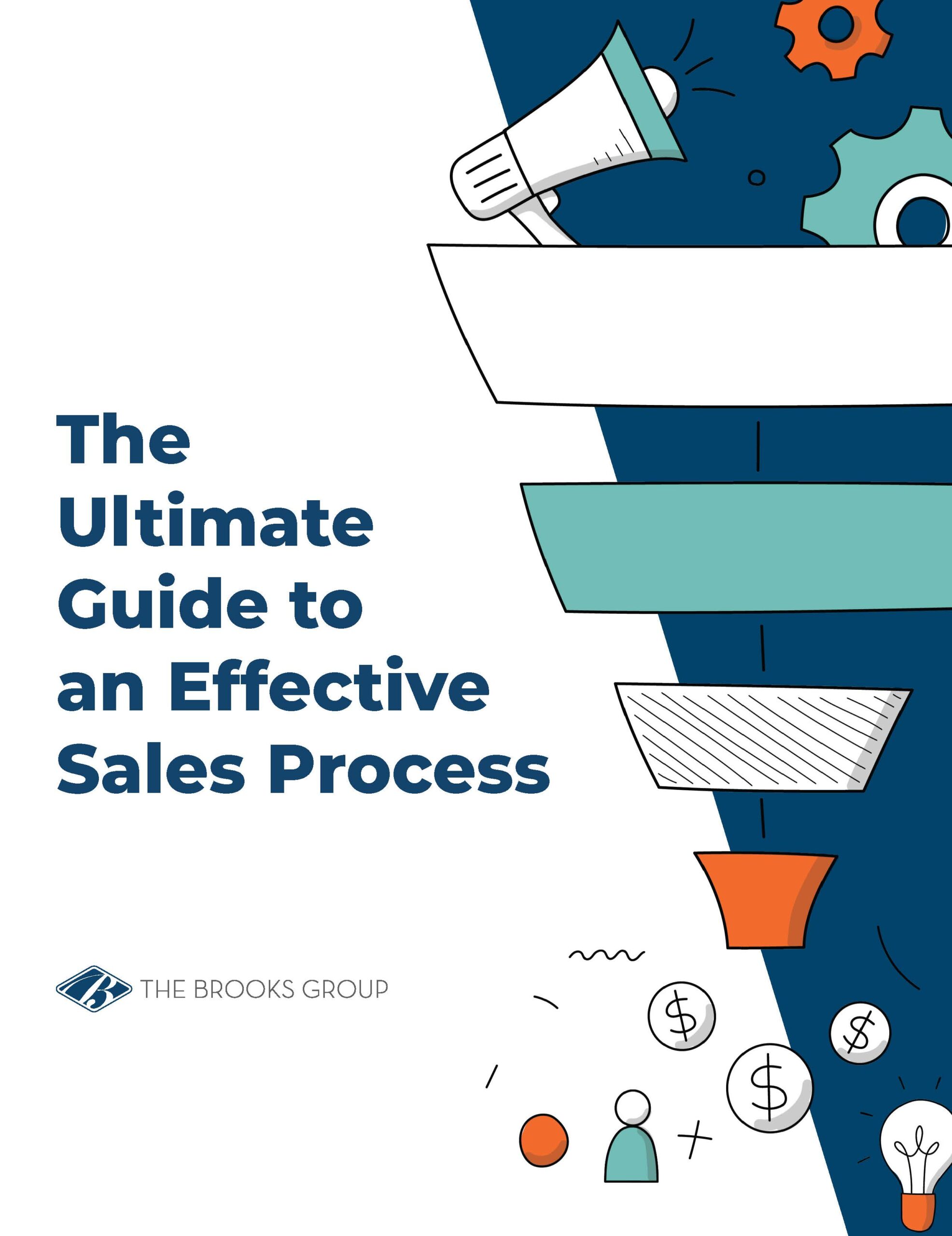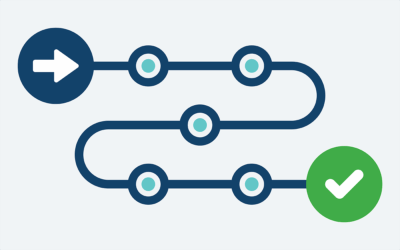The revenue potential of your customers doesn’t end when they sign the contract. Once a prospect buys your product or service, they represent an opportunity for future growth.
If growing customer revenue is on your mind, you’re not alone. A new report from our Sales Performance Research Center shows that sales leaders in multiple industries say that retaining and expanding existing accounts are two of their top three strategic objectives this year:
- 65% want to increase customer retention
- 56% seek to strengthen margins and profitability
- 41% plan to expand existing accounts
Download the 2024 Sales Leader Trend Report for more insights.
When engaging new prospects is tougher than ever, sales organizations know cross-selling and upselling are two effective tactics to increase revenue. Satisfied customers are far more likely to buy than new prospects.
Yet many sales professionals overlook these opportunities, either preferring to stay in “hunter” mode or because they lack the sales training, skills, and coaching to get it done.
This post explains how you can help your sales team maximize the potential of existing customers by showing them how to cross-sell and upsell effectively.
Understanding the Difference Between Upselling and Cross-Selling
First things first: your sales team needs to understand the difference between upselling and cross-selling and the relative value of each.
Upselling = Upgrade/Enhance
Upselling is persuading a customer to buy a more expensive version of a product or service with an upgrade, enhancement, or premium option. Examples include additional features, memberships, a larger scope of work, or a product made with higher-end materials.
The goal of upselling is to present a higher-priced alternative that leads to a larger sale. Ultimately, upselling means your customer spends more in exchange for a higher-end product or service than what was initially on the table.
An example of upselling is adding a maintenance contract to the sale of capital equipment. You sell a dump truck AND you upsell a long-term service contract for tire rotation, oil changes, etc. that helps the buyer protect their investment.
Cross-Selling = Add On/Build Out
Cross-selling, on the other hand, is persuading a customer to purchase products or services in addition to something they have already bought or agreed to buy. Examples include service add-ons and complementary products. Cross-selling leads to a customer spending more with a company for additional goods or services.
An example of cross-selling is selling a dump truck and adding a front-end loader to the deal. You cross-sell a different piece of equipment that helps the buyer use what they bought.
Cross-selling is a good tactic when upselling is not an option and when the additional product or service is clearly related to the original purchase and provides an obvious benefit.
In general, sales professionals should pursue upselling before cross-selling. Customers are more likely to see value in an enhanced version of something they know they want than in something different. Cross-selling also introduces the risk of diluting the customer’s attention, while upselling does not.
7 Sales Training Tips for Effective Cross-Selling and Upselling
1. Keep It Simple
Offering too many products or services at once can backfire by creating confusion and distracting the customer during the sales pitch. Train your sales team to limit upselling and cross-selling efforts to a few items that provide a clear benefit to the customer.
Bringing up unrelated products during discovery can negatively affect customer experience, putting the focus on the sale rather than on understanding their needs. This may make customers become less engaged to avoid the feeling of being sold to.
2. Map Complementary Options
Your sales professionals, account managers, and customer service reps should all be very familiar with your product catalog. The next step is equipping your sales team with a map to help them choose the best products and services for each prospect type at every stage of the customer journey.
Analyze the buying history of current customers and categorize purchases by segment, industry, and product or service to identify common complementary options.
Creating a map of product and service options to use with customers will make it much easier for your sales professionals to determine whether an upsell or a cross-sell is a better fit for the customer. With a clear map to follow, your team is better equipped to focus on customer satisfaction while working toward a larger sale.
3. Time Upselling or Cross-Selling Efforts
Upselling and cross-selling often take place at the end of the sales process, when buyers have committed to the purchase. This can be effective, but in complex sales it’s often better to integrate upselling and cross-selling into the entire customer journey.
With an upsell, the sales professional suggests an upgrade or enhancement to a specific product or service. The seller can introduce the upgrade as soon as it’s appropriate—once the prospect has narrowed their focus to a particular product.
With a cross-sell, the sales professional suggests an additional product or service to complement the product in consideration. This secondary product or service can be introduced as a way to enhance or improve the primary product or service the customer has committed to.
It’s important not to rush to upsell or cross-sell. Keep in mind sales professionals will have many more opportunities to sell additional products or services as they build long-term relationships with their customers.
4. Ask Probing Questions
Effective upselling and cross-selling start with understanding the customer’s needs through a consultative sales approach. This approach helps sales professionals discover pains and problems before recommending a particular product or service.
Train your sales professionals to ask the right types of questions throughout the sales process. They will be able to identify the best products and services for the customer more easily and uncover upsell and cross-sell opportunities.
The ultimate sales goal is to build long-term relationships and strengthen customer loyalty. This starts by asking probing questions throughout the sales process. With a thorough understanding of a customer’s needs, sales professionals can provide genuine value and personalized cross-sell / upsell recommendations.
5. Demonstrate Value
Show your sales team how to use testimonials, case studies, and ROI calculations to demonstrate the value of additional purchases. ROI calculators and testimonials enable sales professionals to show how their product has helped similar companies and prove value.
Use sales coaching sessions to practice value messaging. Compelling presentations that incorporate data make it significantly easier for sales professionals to encourage buyers to invest in additional or enhanced products and services.
6. Offer Loyalty Perks
Create structured opportunities for customers to earn rewards or perks based on their buying patterns. Customers who buy more should get rewarded with more (if that makes sense for your sales model). Train your reps how to use loyalty offerings in upselling and cross-selling efforts.
When a business rewards customers with loyalty perks or complementary products, customers are more likely to agree to a cross-well or upsell offer. This approach rewards customers and conveys the value of their business, while also giving sales professionals a tactic that increases revenue while requiring minimal effort.
7. Follow-Up
Often, the best cross-selling and upselling opportunities arise after the customer has already made and enjoyed a purchase. Make it part of your sales process to follow up with existing customers to ensure they’re happy and to suggest appropriate upsells and cross-sells.
This can be done through follow-up emails, phone calls, or in-person visits. If you can offer a gift or complementary product when following up, this will strengthen customer loyalty and increase overall perception of brand value. This can also increase customer satisfaction and the likelihood that they will be open to an upsell or cross-sell down the road.
If your company does not offer complementary products or services, a follow-up call is still great time to present an upgrade or additional product that would provide value to the customer.
When Not to Cross-Sell or Upsell
Not all customers should be offered additional buying opportunities. Train your salespeople to discern when a customer is likely to be unprofitable, and to avoid providing them with opportunities to be even more unprofitable.
Examples of unprofitable customers include those who overuse your customer service department, who initiate excessive returns, or who consistently demand attention that is above scope for their service level.
Efficient Revenue Growth: Expand Existing Accounts
Cross-selling and upselling are important ways to increase revenue in the most efficient way possible. These techniques, along with other account management strategies, help strengthen customer relationships, uncover new revenue opportunities, shorten sales cycles, and drive sales for your organization.
Learn how The Brooks Group Strategic Account Management training program can help your sales professionals master the art of growing their most profitable accounts.
White Paper Download
The Ultimate Guide to an Effective Sales Process
In this guide, we’ll cover everything there is to know about using a sales process, and how to select the right sales process for your organization.





